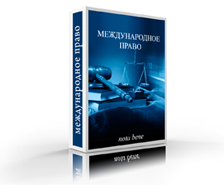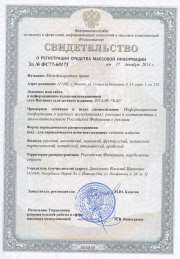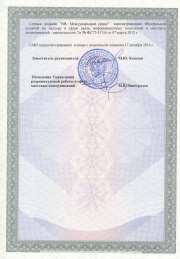MAIN PAGE
> Back to contents
Publications of Savryga Konstantin Pavlovich
|
Law and Politics, 2016-10
|
|
Savryga K.P. - Use of force by the personnel of private military and security companies in conflict zones
|
|
|
DOI: 10.7256/2454-0706.2016.10.11862
Abstract: This work analyzes the legal regimes within which the personnel of private military and security companies (PMSC) are allowed to use force. Analysis is conducted on the consequences for the legal status of the personnel of PMSC in cases of application of various regimes. The author clarifies the notion of direct involvement in military activity and legal consequences. Pertaining to the legal regime of self-defense the author provides requirements that should be met in order to use force and not lose the protection of international law. It is determined that the personnel of PMSC can use force only within the framework of two legal regimes: direct involvement in armed conflict, and self-defense. The author concludes that vast majority of the PMSC personnel does not have the status of combatants and their direct involvement in military action can lead to loss of protection that is given to them as civilians by international law. Thus, the only solution for the personnel of PMSC is use of force in the regime of self-defense. It should be noted that this is only allowed with regards to objects protected by international law (civilian population and objects), otherwise their actions would be considered as direct involvement in military operations.

|
Law and Politics, 2016-10
|
|
Savryga K.P. - Use of force by the personnel of private military and security companies in conflict zones
|
|
|
DOI: 10.7256/2454-0706.2016.10.42625
Abstract: This work analyzes the legal regimes within which the personnel of private military and security companies (PMSC) are allowed to use force. Analysis is conducted on the consequences for the legal status of the personnel of PMSC in cases of application of various regimes. The author clarifies the notion of direct involvement in military activity and legal consequences. Pertaining to the legal regime of self-defense the author provides requirements that should be met in order to use force and not lose the protection of international law. It is determined that the personnel of PMSC can use force only within the framework of two legal regimes: direct involvement in armed conflict, and self-defense. The author concludes that vast majority of the PMSC personnel does not have the status of combatants and their direct involvement in military action can lead to loss of protection that is given to them as civilians by international law. Thus, the only solution for the personnel of PMSC is use of force in the regime of self-defense. It should be noted that this is only allowed with regards to objects protected by international law (civilian population and objects), otherwise their actions would be considered as direct involvement in military operations.

|
Savryga K.P. - War on terror as an armed conflict: de lege lata and de lege ferenda
|
|
|
DOI: 10.7256/2454-0706.2016.4.15056
Abstract: In the modern world many nations face the serious threat of terrorism. Today, the terrorist organizations often represent a more powerful force than few decades ago, and many of them currently (for example the so-called Islamic State or ISIS) possess military capabilities comparable to some countries, which poses before the global community a question of allowance of application of the paradigm of an armed conflict to the relations on the fight with the aforementioned terrorists, as it gives the state greater freedom of using force against the enemy than the paradigm of human rights. The author studies various doctrinal approaches that characterize war on terror as the third form of armed conflict. In the end, the author concludes that the de lege lata war on terror cannot be considered an armed conflict, since for an international armed conflict the terrorist organization lacks corporate personhood, and for non-international military conflict, the violence that is caused by the terrorist organizations usually does not meet the criteria of intensity (even though there are some exceptions).

|
Savryga K.P. - War on terror as an armed conflict: de lege lata and de lege ferenda
|
|
|
DOI: 10.7256/2454-0706.2016.4.42745
Abstract: In the modern world many nations face the serious threat of terrorism. Today, the terrorist organizations often represent a more powerful force than few decades ago, and many of them currently (for example the so-called Islamic State or ISIS) possess military capabilities comparable to some countries, which poses before the global community a question of allowance of application of the paradigm of an armed conflict to the relations on the fight with the aforementioned terrorists, as it gives the state greater freedom of using force against the enemy than the paradigm of human rights. The author studies various doctrinal approaches that characterize war on terror as the third form of armed conflict. In the end, the author concludes that the de lege lata war on terror cannot be considered an armed conflict, since for an international armed conflict the terrorist organization lacks corporate personhood, and for non-international military conflict, the violence that is caused by the terrorist organizations usually does not meet the criteria of intensity (even though there are some exceptions).

|
International Law and International Organizations, 2016-3
|
|
Savryga K.P. - Extraterritorial use of force against non-state actors in international law
|
|
|
DOI: 10.7256/2454-0633.2016.3.19083
Abstract: Right of states to use force in international law is one of the most controversial and important question in public international law. Despite the general prohibition on use of force expressed in the Article 2 (4) of the UN Charter, there are many disputes about the actual scope of the prohibition and possible justification. It is obvious that the legal rules must adapt to the contemporary challenges faced by international community to provide convenient and legitimate solution which would not contradict the current international legal order. In this article the author considers the question of extraterritorial use of force against non-state actors. Analyzing legal norms and doctrinal position that has fully developed by the end of the XX century and their development after the events of September 11 and threat of global terror faced by international community, author comes to the conclusion that the current legal norms and legal doctrine recognize the right of states to use force extraterritorially against non-state actors.

|
Savryga K.P. - Ukrainian crisis and international law: armed conflict in eastern Ukraine and secession of Crimea
|
|
|
DOI: 10.7256/2454-0706.2015.7.15505
Abstract: The international Ukrainian crisis, which started in February of 2014, consists of several components; first of all, it is an armed conflict on the territory of a number of eastern regions of Ukraine, and secession of the Republic of Crimea from Ukraine and its subsequent annexation to the Russian Federation. This article examines the questions of possible international legal qualifications of armed conflicts on the territories of Donetsk and Luhansk regions of Ukraine, as well as the issue of possible grounds for Crimean secession from Ukraine. And finally, basing on the official point of view of Ukrainian government, we will attempt to determine which methods of legal defense Ukraine can receive within the framework of the current system of international law. As a result, the author concludes that the conflict in the southeast of Ukraine can represent an international character regardless of direct involvement of members of the Russian armed forces. As to the secession of Crimea, the author concludes that acknowledgement of the legality of its independence under the current circumstances depends on acknowledgement of the government, which is more of a political rather than legal issue. Even in the case of confirmed international armed conflict and act of aggression from the Russian Federation, the modern international law does not contain effective means of protection of the victim country.

|
Savryga K.P. - Ukrainian crisis and international law: armed conflict in eastern Ukraine and secession of Crimea
|
|
|
DOI: 10.7256/2454-0706.2015.7.42780
Abstract: The international Ukrainian crisis, which started in February of 2014, consists of several components; first of all, it is an armed conflict on the territory of a number of eastern regions of Ukraine, and secession of the Republic of Crimea from Ukraine and its subsequent annexation to the Russian Federation. This article examines the questions of possible international legal qualifications of armed conflicts on the territories of Donetsk and Luhansk regions of Ukraine, as well as the issue of possible grounds for Crimean secession from Ukraine. And finally, basing on the official point of view of Ukrainian government, we will attempt to determine which methods of legal defense Ukraine can receive within the framework of the current system of international law. As a result, the author concludes that the conflict in the southeast of Ukraine can represent an international character regardless of direct involvement of members of the Russian armed forces. As to the secession of Crimea, the author concludes that acknowledgement of the legality of its independence under the current circumstances depends on acknowledgement of the government, which is more of a political rather than legal issue. Even in the case of confirmed international armed conflict and act of aggression from the Russian Federation, the modern international law does not contain effective means of protection of the victim country.

|
Savryga K.P. - Lawfulness of the targeted killings within international law: international humanitarian law and human rights
|
|
|
DOI: 10.7256/2454-0706.2015.6.15525
Abstract: This article examines one of the most controversial state practices currently used in the war against terrorism, namely the targeted killing. The author assesses the correspondence of this phenomenon with international humanitarian law and international law of human rights pertaining to targeted killings during military conflicts and law enforcement operations. In the first part of the research, the author reviews the law of military conflicts and analyzes the legal status of various parties and the general limitations with regards to use of force during a military conflict. In the second part of the research, in analyzing the limits of the protection of the right to life, the author underlines the requirements that should be met before taking a life. The author comes to the conclusion that the practice of targeted killing corresponds with the norms of international law, but at the same time this practice remains subject to limitations from a number of principles in international law on armed conflicts such as proportionality, military necessity, caution, as well as the regulation of the use of methods and means of warfare and international law on human rights, particularly the protection of the right to life and prohibition of intentional or willful taking of life. The author rejects the existence of any other grounds for legalization of targeted killings other than those expressed within the norms of international humanitarian law and law on human rights.

|
Savryga K.P. - Lawfulness of the targeted killings within international law: international humanitarian law and human rights
|
|
|
DOI: 10.7256/2454-0706.2015.6.42782
Abstract: This article examines one of the most controversial state practices currently used in the war against terrorism, namely the targeted killing. The author assesses the correspondence of this phenomenon with international humanitarian law and international law of human rights pertaining to targeted killings during military conflicts and law enforcement operations. In the first part of the research, the author reviews the law of military conflicts and analyzes the legal status of various parties and the general limitations with regards to use of force during a military conflict. In the second part of the research, in analyzing the limits of the protection of the right to life, the author underlines the requirements that should be met before taking a life. The author comes to the conclusion that the practice of targeted killing corresponds with the norms of international law, but at the same time this practice remains subject to limitations from a number of principles in international law on armed conflicts such as proportionality, military necessity, caution, as well as the regulation of the use of methods and means of warfare and international law on human rights, particularly the protection of the right to life and prohibition of intentional or willful taking of life. The author rejects the existence of any other grounds for legalization of targeted killings other than those expressed within the norms of international humanitarian law and law on human rights.

|
National Security, 2014-4
|
DOI: 10.7256/2454-0668.2014.4.11863
Abstract:
DOI: 10.7256/2454-0706.2014.1.9569
Abstract:
DOI: 10.7256/2454-0706.2014.1.42317
Abstract:
|
International Law and International Organizations, 2013-4
|
DOI: 10.7256/2454-0633.2013.4.10098
Abstract:
|






